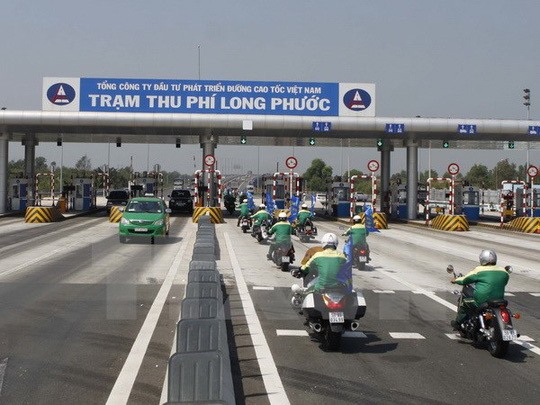 Society
Society

The Việt Nam Expressway Corporation (VEC) yesterday began a new system of collecting tolls using smart cards on the HCM City-Long Thành-Dầu Giây Expressway, which connects HCM City and Đồng Nai Province.
 |
| Long Phước toll collection station on the HCM City-Long Thành-Dầu Giây expressway. The station yesterday began collecting tolls via smart IC-cards.— VNA/VNS Photo Hoàng Hải |
HCM CITY — The Việt Nam Expressway Corporation (VEC) yesterday began a new system of collecting tolls using smart cards on the HCM City-Long Thành-Dầu Giây Expressway, which connects HCM City and Đồng Nai Province.
The new system includes 33 semi-automatic toll collection stations equipped with a Radio Frequency Identification (RFID) system.
The IC-card is a memory card that stores data with memory chips and can be exchanged with computers via radio reading and writing devices.
The RFID system installed at the toll station will identify the car’s entry point and exit point, and activate a camera to photograph the vehicle’s number plate while reading the IC-card to calculate the charges for each type of vehicle.
The IC-card will be issued to the driver at the first station of the expressway, and the driver will return it to the toll attendant before exiting the expressway.
The system will calculate the charge based on the type of automobile and the length of the expressway on which the vehicle has travelled.
After the toll attendant receives cash from the driver, invoices will be printed for the driver, and the barrier will be opened for the car to pass through.
Nguyễn Thị Hoài Phương, deputy director of VEC, said the new system would help reduce costs for management and operation while saving time for drivers.
In case of loss or damage to the card, the drivers will have to pay a fee to issue the card (VNĐ200,000 or US$8.5) and will pay double the toll for the longest route on the expressway, according to Phương.
E-toll collections
After two weeks of deployment, the company will also apply an electronic toll collection (ETC) system or non-stop toll collection service based on Onboard Unit (OBU) equipment installed on automobiles.
In order to pay a toll through an ETC system, automobile owners will be granted an E-tag card free of charge along with a toll payment account.
The cards are required to be placed on the front window of the automobile, and when the vehicle passes a toll collection lane, the RFID system installed at the toll station will activate a camera to photograph the vehicle’s plate number while reading the R-tag cards.
If the vehicle owners’ account is sufficient to pay the toll, it will be deducted from the account and a text massage will be sent to the account holder’s mobile phone.
If the account does not have enough money for the toll, drivers will be required to pay in cash and receive a voucher, as in traditional toll collection.
With the new method, the toll will be collected automatically, and the vehicle will not need to stop to pay, Phương said.
The drivers registered to use non-stop toll collection service will be served on separate ETC lanes.
With a length of 55km, the HCM City-Long Thành-Dầu Giây Expressway has a total investment of more than VNĐ20.6 trillion ($908 million).
Opened in 2015, the six-lane expressway has helped shorten the distance from HCM City to Vũng Tàu.
As of May 12, nearly 34 million vehicles with an average of 37,000-40,000 vehicles per day, travelled on the expressway.
In the first two months of the year, the expressway served 2.6 million vehicles, a rise of 24 per cent over the same period last year. — VNS




